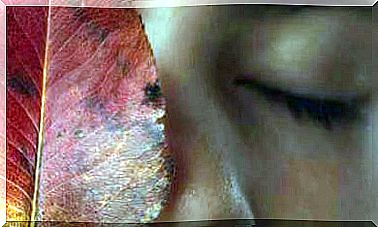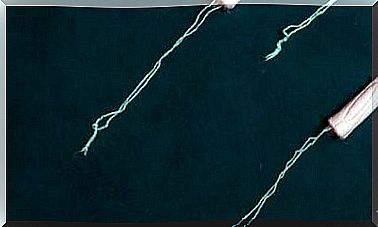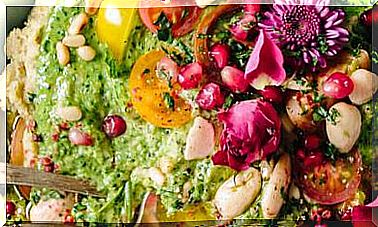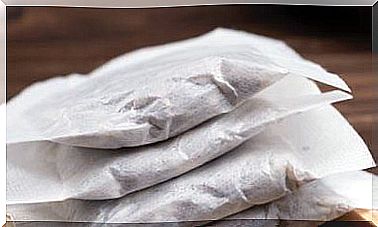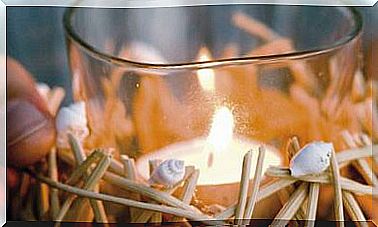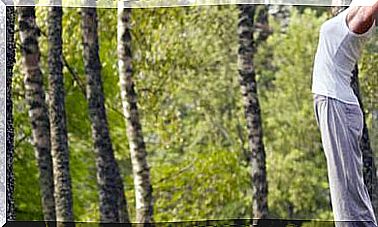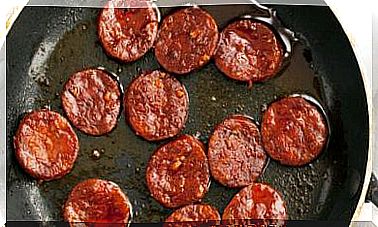Cold Infusions: Therapeutic Soft Drinks That Take Care Of You
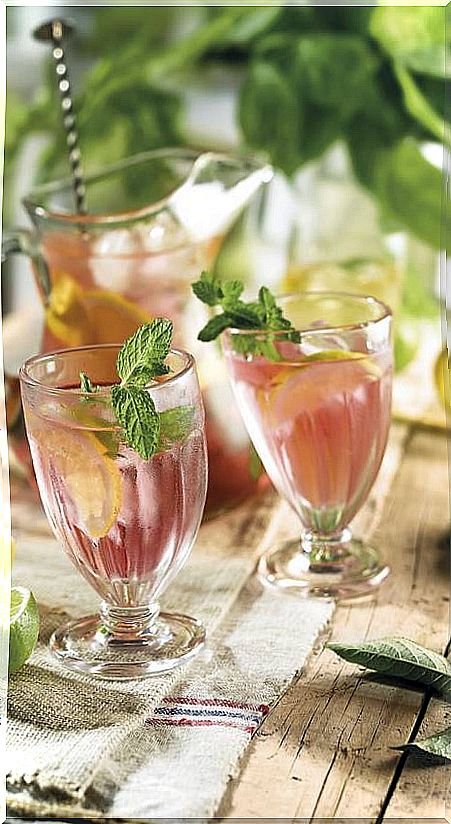
The medicinal properties of soft drinks made with plants
Among the general properties and advantages of cold infusions over sugary soft drinks, we can mainly highlight the following:
- They incorporate medicinal plants, which are the basis of traditional medicine. The molecules they have are similar to those of the human being, so they act as close agents and not foreign to the body in the healing process.
- These plants do not usually generate addiction, except in some exceptional cases, and many act as digestive balms.
- The vivid colors of many fruits and flowers are due to pigments that act as effective antioxidants and anti-inflammatories.
The infusions that incorporate fruits provide us, although diluted, the nutritional benefit of their mineral salts and vitamins.
- As in herbal teas the sugar content is zero or, if sweetened, much lower than that of sugary soft drinks, they can be taken for relatively long periods, in always weighted doses.
- We can complement the actions of some plants and others to balance their properties and enhance their therapeutic and preventive effect. With the advantage that, unlike drugs, they do not usually have side effects. This does not mean that they are harmless: misuse or overconsumption can also lead to health problems.
- They hydrate us when it is hot, with the advantage that, while they hydrate, they transfer the active principles and nutrients of the plants they comprise to the thirsty body.
- Most infusions have a diuretic and purifying function, which is once again very adequate in the hot months, and they help to eliminate waste substances through the urine, which is an excellent support to lose a few kilos. In any case, you have to know that they do not necessarily eliminate fat accumulations. And it is convenient, in addition to taking the appropriate infusions, a light balanced diet and systematic physical exercise.
- Last but not least, herbal teas offer all of these benefits while still being an excellent, appetizing thirst-quenching soda , not distracting or fooling you like commercialized sugary sodas do.
The most used medicinal plants
The list is extensive, so the variety of infusions that are delicious as a soft drink is enormous:
- Aromatic plants such as hyssop, lavender, thyme, mint or sage are rich in essence, and show a digestive, antiseptic and expectorant action of high therapeutic value.
- Umbelliferae, which include celery, anise, fennel, caraway or cumin, stand out for their carminative and digestive, antispasmodic and diuretic power, which is given by the essential oil, flavonoids and sterols that are among their most valuable active ingredients.
- Many fruits and berries, including strawberry trees, blueberries, sloes, plums, blackberries and raspberries, contain red and blue pigments in their skin that exert an antioxidant and anti-inflammatory action, from which we can benefit.
- The flowers of mallow, hibiscus or violas carry mucilages and anthocyanins and behave as anti-inflammatory, mucolytic and laxative.
- Some spices such as cinnamon, ginger or turmeric, also very rich in essential oils, also provide their stimulating, antiseptic and balsamic effects to the infusions that incorporate them.
- To eliminate the feeling of thirst, infusions with a bitter touch such as tea or rooibos are usually more effective than sweet ones. And plants with an intense flavor and sometimes with a spicy touch are also quite effective.
- Many cold infusions include plants with a certain citrus or lemon flavor such as citronella, lemon balm, savory or lemon verbena, and there are those who like to add lemon juice to enhance this aspect.
Prepare your cold infusions without losing properties
To preserve the active principles of medicinal plants, avoid subjecting the infusion to excessive boiling, which would degrade them.
It is also possible to prepare infusions or macerations directly with cold water.
1. How to make an infusion
The infusion is the simplest way to create a remedy with plants. However, decoction is not the same as blanching these plants. These methods can produce different effects depending on the active ingredients that each plant contains.
- As a general rule, the recommendation is to boil the plants or their hard and fibrous parts, such as barks, woody stems or roots, for a few minutes, or if you want to obtain more concentrated solutions, such as those required in laxative remedies. Thus we would obtain a decoction.
- On the other hand, blanching reserves softer plants or plant parts, such as leaves, some fruits and flowers, in order to avoid that the essences or other active principles end up dissipating or evaporating.
- Infusions with tender flowers and leaves – not leathery – do not require more than blanching. Simply put the herb or herb mixture in a kettle and pour the freshly boiled water over it. It should be covered, to prevent the essential oils from escaping or evaporating, and the infusion is kept at rest for about 10 minutes. To take it cold, once it has lost the heat, it is stored in the fridge for a few hours, or better even overnight.
You can also add an ice cube to the infusion just when you are going to consume it or keep it for an hour in the freezer.
- The strongest herbs or parts of the herbs can also be given a brief boil and then follow the previous pattern.
- The fruits of the forest can be subjected to a brief decoction or macerated in very cold water.
- And in infusions that combine herbs and fresh fruits, the latter should be cut into slices or cubes, placed in a glass bottle, then added cold water and herbs, and kept in the fridge for 2 or 3 hours.
The recommended amounts of plants are, in general:
- 20 grams of dried plant or 30 grams of fresh plant per 500 ml of water if a kettle is used
- 5 grams per cup of water in individual doses
Ideally, prepare the infusion in the afternoon and store it in the refrigerator overnight, to drink the next day. Cold teas prepared at home can be kept in the refrigerator for 48 hours, since after that time they tend to lose part of their active ingredients.
2. How to prepare a cold water maceration
Cold water macerations are especially suitable for incorporating plants rich in mucilage, gums, bitter principles and essences. Also plants with hard elements – logs, barks and roots – such as witch hazel, burdock, hyssop or sarsaparilla.
They are left overnight or even a day or two so that the water soaks up the flavor of the plants well.
However, it must be ensured that the plants to be prepared in cold water are free of parasites, impurities or dirt. Therefore, it is advisable to wash them well before placing them in the kettle to prevent them from containing sources of bacteria. In an infusion there would be no problem, because by the effect of the heat they would be destroyed, but extreme precautions must be taken when macerating.
In the macerations, plants with a minimum of toxicity or irritant potential should be discarded, such as plants rich in alkaloids, histamines and some glycosides or catechic tannins, including horsetail, nettle, juniper or passionflower.
Take advantage of them to make sorbets, jellies and aromatic ice cream
With medicinal plants you can make refreshing summer delicacies such as sorbets, jellies or ice cream, healthy and very appetizing.
The infusions of aromatic plants such as savory, fennel, thyme or tarragon can dress salads and stews of vegetables, legumes and fish. But they can also be incorporated into cakes, ice cream, sorbets and other refreshing options.
Examples of this practice are black tea or green tea, ginger, cinnamon, sage or chamomile ice cream, mint, basil or watermelon sorbets and jasmine tea, rooibos infused lemon sorbet or flan infused with ratafia.
Medicinal plants can also be used as a base for vegetable and natural gelatins. They should be curdled with agar agar, a gelatin that is extracted from algae that is healthier than that of animal origin. Among other benefits, it helps regulate intestinal transit and limits fat absorption.
To make the gelatin, the agar-agar powders are poured into the hot infusion and stirred well until the desired consistency is achieved. Then it is allowed to cool in the mold. Hibiscus, cinnamon and apple infusions are among the most valued for making these jellies.
Why avoid commercial sodas
According to a study carried out by Professor Víctor J. Martín Cerdeño of the Complutense University of Madrid, Spanish households consume 1,743 million liters of soft drinks and other soft drinks per year and spend more than 1,438 million euros on This concept.
It assumes an average per capita consumption of almost 50 liters per year, an outrage! And it is the cola, with 50%, the main drink consumed. The ubiquitous soft drink advertising, aggressive and catchy in many cases, contributes substantially to consolidating this consumption, as does social mimicry.
Soft drinks contain large amounts of refined sugar, but not only that. They also contain preservatives, colorants and other additives, such as caffeine, phosphoric acid, or even traces of monosodium glutamate, a flavor enhancer.
So, if continued and excessive consumption of this type of products is maintained, they can end up generating different health problems from a very early age, such as overweight, obesity, diabetes, hypertension, damage to tooth enamel due to the action of acid. , bone weakening, allergies and kidney disorders, such as stone formation.
The sodium benzoate is present in many of these drinks, increases the uptake of this nutrient, sodium, and reduces the absorption capacity of potassium, which is a risk hypertensives.
The gas added to soft drinks – carbon dioxide, which is what gives them the effervescent fizz – helps make them more palatable, but also more addictive, inflates the abdomen and can cause gastric irritation and gas problems.
In addition, this gas stimulates gastric juices and tricks the body causing a feeling of satiety, so we stop nourishing ourselves with the food we really need, an aspect that must be taken into account with children.
